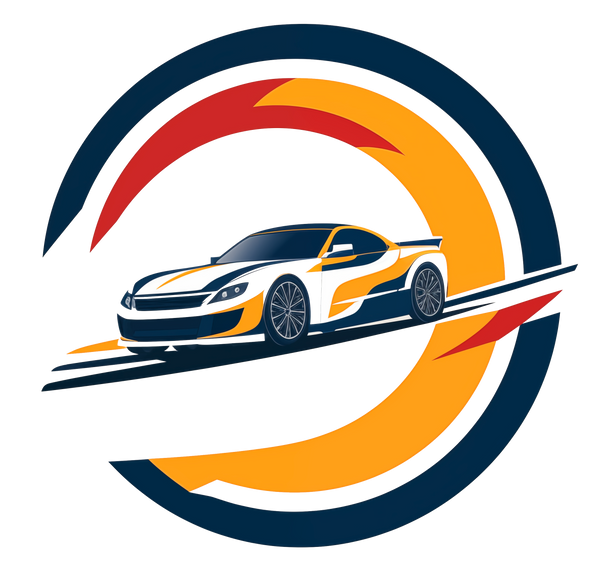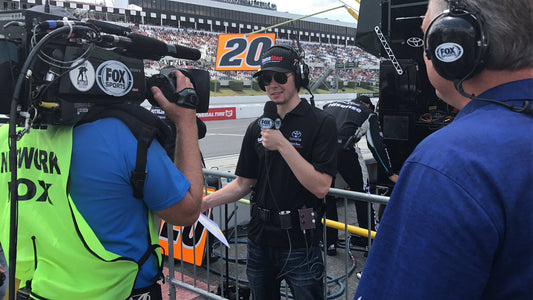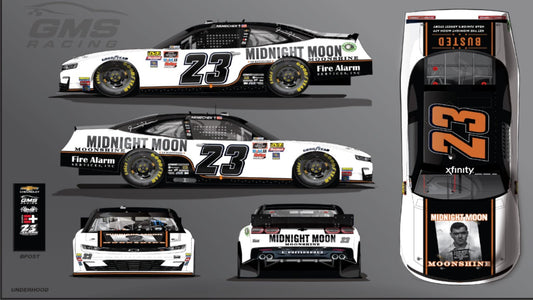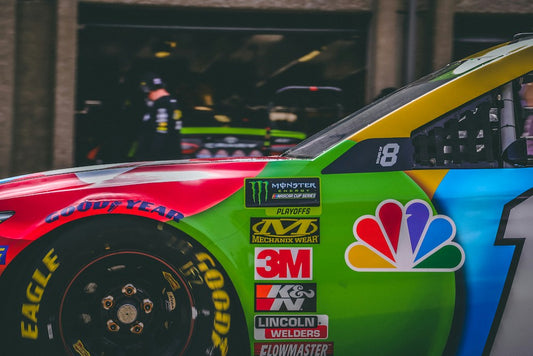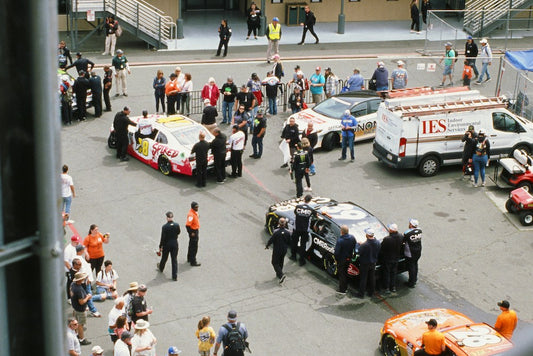Shifting Gears: The Remarkable Evolution of NASCAR Media Coverage

Over the years, NASCAR has experienced a remarkable evolution in its media coverage, transforming from limited coverage in local newspapers and radio stations to a multi-platform, digital media extravaganza.
In this blog post, we will explore the early days of NASCAR media coverage, the turning point that propelled it into the mainstream, advancements in technology that revolutionized the fan experience, the challenges faced in media coverage, the impact of technology on NASCAR coverage, the role of digital media, and a case study on the impact of a specific brand on NASCAR media coverage.
Early Days of NASCAR Media Coverage
In the early days of NASCAR, media coverage was limited to local newspapers and radio stations. These outlets would provide race results and driver profiles, but there was little focus on the sport as a whole. NASCAR struggled to gain mainstream popularity, as it was often overshadowed by other sports such as football and baseball.
The Turning Point for NASCAR
In the late 1970s, races started to be televised, which allowed a much wider audience to experience the thrill of NASCAR. With television coverage, NASCAR gained more exposure and began to attract a larger fan base.
Television coverage allowed NASCAR to reach a national audience. Fans from all over the country could now watch races from the comfort of their own homes. This expanded audience reach helped NASCAR gain popularity and solidify its position as one of the top sports in the United States.
With the expansion of audience reach through television coverage, mainstream media started to take notice of NASCAR. National newspapers and magazines began to cover the sport, providing in-depth analysis and feature stories on drivers and teams. This increased interest from mainstream media further propelled NASCAR into the spotlight.
Advancements in Technology
One of the major advancements in NASCAR media coverage was the introduction of in-car cameras. In the 1990s, NASCAR started installing cameras inside the race cars, giving viewers a unique perspective and allowing them to experience the race from the driver's point of view. This innovation revolutionized the way fans watched NASCAR and added a new level of excitement to the broadcasts.
Another significant advancement in technology was the ability to broadcast races live. In the early days of NASCAR, fans had to rely on delayed broadcasts or radio updates to follow the races. But with the advent of live broadcasting, fans could now watch the races as they happened, adding to the overall excitement and engagement.
These technological advancements had a profound impact on the fan experience. Fans could now watch races from multiple camera angles, listen to in-car audio, and even interact with drivers and teams through social media. The advancements in technology brought fans closer to the action and enhanced their overall engagement with the sport.
Challenges
As technology continued to advance, NASCAR faced the challenge of keeping up with the changing media landscape. The rise of the internet and digital media created new opportunities and challenges for NASCAR's media coverage. NASCAR had to adapt to these changes and find new ways to engage with fans.
Another challenge NASCAR faced was balancing traditional forms of media, such as television and radio, with new forms of media, such as online platforms and social media. NASCAR had to find the right balance between these different mediums to ensure that they were reaching and engaging with their diverse fan base.
Digital and social media became increasingly important in NASCAR's media coverage. NASCAR had to embrace these platforms and utilize them to connect with fans, provide real-time updates, and enhance the overall fan experience. NASCAR also had to navigate the challenges and opportunities that came with social media, such as managing the reputation of the sport and addressing any controversies or negative publicity.
Technology on Media Coverage
The rise of streaming services and online platforms has had a significant impact on NASCAR's media coverage. Fans can now watch races on their computers, smartphones, and other devices through streaming services and online platforms. This has expanded NASCAR's fan base and made the sport more accessible to a global audience.
The advancements in technology and the availability of NASCAR on various platforms have led to an expanded fan base. People who may not have had access to NASCAR races in the past can now follow the sport and become fans. This has helped NASCAR grow its popularity and reach new markets.
Technology has also allowed for real-time updates and interaction between fans, drivers, and teams. Through social media platforms, fans can receive instant updates on race results, watch highlights, and interact with their favorite drivers. This real-time interaction has brought fans closer to the sport and created a sense of community among NASCAR enthusiasts.
Role of Digital Media
Digital media has transformed the way NASCAR is covered. Traditional media outlets, such as television networks and newspapers, now have digital platforms where they provide additional content, analysis, and behind-the-scenes coverage. Digital media has allowed for more in-depth coverage of NASCAR and has given fans access to a wealth of information and content.
Social media platforms, such as Twitter, Instagram, and Facebook, have become essential tools for NASCAR's media coverage. NASCAR, drivers, teams, and sponsors utilize these platforms to engage with fans, provide updates, share content, and build a loyal fan base. Social media has become a powerful tool for promoting the sport and connecting with fans on a personal level.
Digital media and social media have also enabled real-time updates and interaction during races. Fans can follow live updates, watch highlights, and engage in conversations with other fans and even drivers. This real-time interaction has added a new dimension to NASCAR media coverage and has made the sport more engaging and interactive for fans.
Conclusion
NASCAR's media coverage has come a long way since its early days. From limited coverage in local newspapers and radio stations to a multi-platform, digital media extravaganza, NASCAR has evolved to meet the demands of its passionate fan base. The introduction of television coverage, advancements in technology, and the rise of digital and social media have all played a significant role in transforming NASCAR's media coverage.
The evolution of NASCAR's media coverage is a testament to the sport's popularity and its ability to adapt to changing times. NASCAR has embraced technology and utilized various platforms to engage with fans and provide them with an immersive experience. The sport has become more accessible, interactive, and engaging, thanks to advancements in media coverage.
